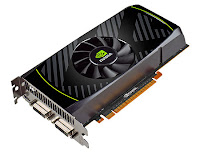 iPod nano 6th generation is has half the size of the Ipod Nano 5G, the interface has smooth movements similar to the Ipod touch. It’s portable and wearable, which makes it runnable, walkable, and workout-able. Clip it on and control your music with just a tap or swipe of a finger, so you can stay focused without fumbling around. For your run, walk, or trip to the gym, a little iPod nano goes a long way.And the anodized aluminum finish in six bright colors makes this new design even more brilliant.
iPod nano 6th generation is has half the size of the Ipod Nano 5G, the interface has smooth movements similar to the Ipod touch. It’s portable and wearable, which makes it runnable, walkable, and workout-able. Clip it on and control your music with just a tap or swipe of a finger, so you can stay focused without fumbling around. For your run, walk, or trip to the gym, a little iPod nano goes a long way.And the anodized aluminum finish in six bright colors makes this new design even more brilliant.The Nano New Feature Multi-Touch Option Review
The new touch menu system is faster than the old wheel. Its size is unreal. The square screen is perfect for album art.The Multi-Touch screen and simple finger gestures make it easy to use iPod nano. Navigation of music is now completed via touch, which works effectively despite the small screen that makes iPod Nano users “touching,” their music as iPod Touch and iPhone users have before them. The click wheel is gone. To find your music, you select a category from the Nano’s menu such as “Playlists,” or “Artists,” and select from there.
- Tap and Double-tap :Tap an icon to open it, or to select an item in a menu or list.
- Touch and Hold :Touch and hold anywhere on the screen to return to the Home screen.
- Swipe:Swipe sideways to move to the next or previous screen.
- Drag:Drag over scrubber bars or sliders to move their controls.
- Flick:Flick your finger quickly up or down to scroll rapidly.
- Rotate:You can rotate the screen so it’s easier to see when you clip iPod nano to something.
iPod Nano 6G Pros:
- Decent sound quality,
- The clip is convenient, the colors are neat, and the new internal technologies are fun
- FM radio which is OK at best.
- The ipod updates your TOP RATED tracks live so if you give a song five stars, it will automatically add it your favorite playlist.
iPod Nano 6G Cons:
- The screen is much smaller than the previous generation. Therefore, playback of video content from iTunes is gone. Nano no longer plays video, which was a feature, added three years ago.
- Secondly, last year, Nano added a small video camera to record low quality video, which could be played back on the Nano’s screen or synced with iTunes and viewed on your computer. That feature is gone too. The device is too small now for a camera or to watch video. However the camera and video functions aren’t essential to a good music player.
Which is better to buy iPod Nano 6th Gen or ipod shuffle 4G? – iPod nano vs ipod shuffle
iPod Nano 6th Generation is the ultimate Podcast and Music device. It has the visual convenience of the smart phone or iPod, along with portability of a small MP3 player. If you just listen to play lists, the shuffle will do, but for browsing the music library or navigating podcast, can’t beat the Nano.
Who should buy iPod Nano 6th Generation?
Nano is a product for people who don’t need or care about a movie player, but are instead looking for the Touch’s music capabilities and Apple quality in a much smaller package.
If you want a music player and you want more than 2GB or storage, but you don’t need apps or video or games because all you want to do is listen to music, the iPod Nano seems to be the ideal purchase.
source:
www.appleipodreviews.com
www.appleipodreviews.com



































